I was pleased to participate in Mayor Bloomberg's press event yesterday at Lucky's Café on East 34th Street along with other public health activists. The mayor vowed that the city will appeal the ruling overturning the portion-size restriction for sugar-sweetened beverages that was set to go into effect. He also eloquently spoke about the health implications of consuming large sugary beverages for New Yorkers. The mayor mentioned that obesity is killing more than 5,000 New Yorkers annually and 100,000 people nationwide. Indeed, large portions of sugar-sweetened beverages are contributing to our obesity epidemic.
The proposed portion size cap was set to restrict the sale of sodas and other sugary drinks that are larger than 16 ounces in food establishments, including fast-food chains, restaurants, movie theaters, sports arenas, delis, and street carts. It would include the now-typical 20-ounce soda bottle from the corner deli and most oversized fountain drinks available in fast-food establishments and movie theaters. It would even include many "small" sodas served at such eateries.
The press release from Mayor Bloomberg's office cites new research from the city showing a strong connection between the consumption of sugary beverages and obesity.
The release states that:
... neighborhoods with higher rates of consumption of sugary drinks tended to have higher obesity rates. Nine of the top 10 neighborhoods with the highest obesity rates city-wide were also the highest in sugary drink consumption. At the other end, the three least obese neighborhoods were also the lowest in sugary drink consumption.
From a nutritionist's point of view, this makes perfect sense. Sugar-sweetened beverages are purely liquid calories, provide no nutrients, no health benefits, and contribute unnecessary calories to our diets. And, as I found in my research, portion sizes of soft drinks and other foods have grown considerably over time and so have our waistlines. The sizes of soft drinks have morphed into jugs and half-gallon containers large enough for a family of eight. In the 1950s, a Burger King "small" soda was 12 ounces and the "large" was 16 ounces. Today, its "small" is 20 ounces. In 1916, a Coca-Cola bottle was 6.5 ounces, and in the 1950s, a Coca-Cola ad advertised the 16-ounce size to be shared among 3 people. Today, many people complain that 16 ounces is too small. Indeed, our perception has shifted.
As I previously wrote here:
... the mayor of New York City is not banning the sale of soda. Nor is he telling consumers that they can't drink soda. Rather, he is calling attention to how much should be considered a reasonable amount to drink at a time. And 16 ounces is certainly more than a reasonable -- that is a pint-size worth of sugar water. I do not see the proposal as a ban, but rather as an attempt to reset the norm for how much drink constitutes an appropriate portion. This is a much needed proposal in an era of oversized portions.
I was pleased to offer my support to the city's portion size restriction. As I indicated in the press release from the mayor's office:
"I am in support of the portion-size restriction on sugar-sweetened beverages," said Lisa Young, Adjunct Professor in the Department of Nutrition, Food Studies and Public Health at New York University. "Large portion sizes of sugar sweetened beverages are a major contributor to the obesity epidemic. Capping the size of sugar-sweetened beverages is an excellent way to fight obesity. Large portions of soda contain many calories and absolutely no nutrients. No one should be drinking a 64 ounce (half gallon) of soda. A 16-ounce soda (a pint size) is certainly large enough for one person."
But consumers will only buy small portions if the price is right or if the large sizes disappear. The price is rarely right for small portions, however. Manufacturers rarely charge half price for a half portion, as it has to cover its costs. And the cost of food is cheaper than most other costs such as rent, labor, and supplies.
As I wrote in an opinion piece for the New York Daily News back in September after the proposal was approved by the Board of Health:
Large portions contribute to obesity because they obviously contain more calories than small portions: A small soda (16 ounces) at KFC contains 180 calories, while the Mega Jug (64 ounces) contains nearly 800 calories -- and is more than one-third of an entire day's recommended calories for some people. Bigger portions also encourage us to consume more and to thus underestimate how much we are really eating and drinking. And it is the destitute who are most frequently the victims of the ills that come with fast-food consumption.
Given the enormous health implications of obesity in New York and elsewhere, capping the portion sizes of liquid calories devoid of nutrients is a terrific place to start.
The city did indeed file an appeal of Judge Tingling's ruling. It is unclear how long it will take before a decision is reached. While I do hope that the decision is made in favor of the city, regardless of the outcome, Mayor Bloomberg and the city accomplished a great deal. The proposal to limit supersize sugary beverages set the stage for a national discussion on the contribution of our food environment -- in particular, large portions of sugary beverages -- to the obesity epidemic. And, we can do something about it!
I do hope that while we are waiting, restaurants and other eating establishments follow Lucky Café's lead and voluntarily offer smaller sodas. We as consumers should also pay closer attention to the sizes of our food portions. We should think twice before buying the larger size, even if we get twice as much for just an extra quarter. And, in the end, we must remember that portion size matters.
For more by Dr. Lisa Young, click here.
For more on diet and nutrition, click here.